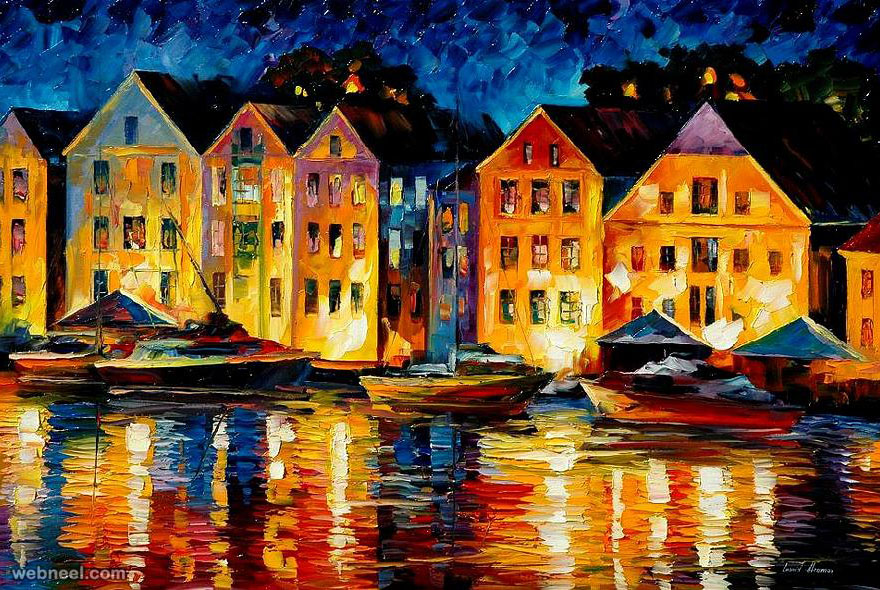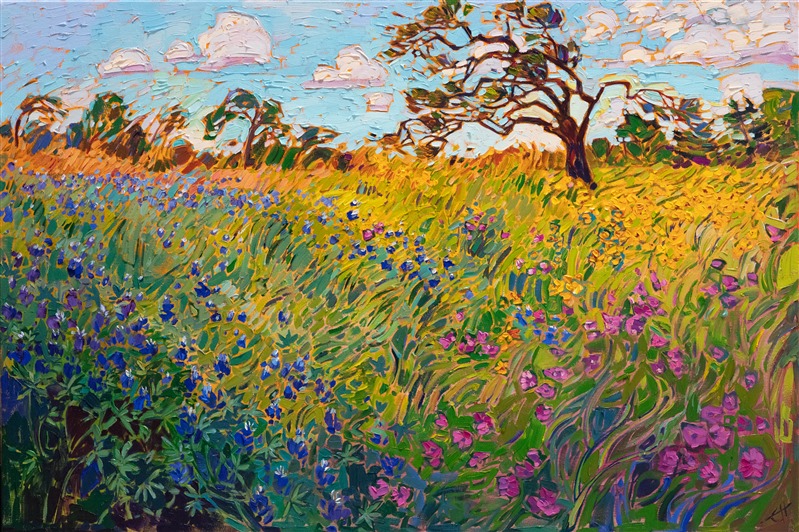Checking out All Concerning Oil Paints: An Overview to Recognizing Their Elegance and Worth
Oil paints have astounded target markets for centuries, supplying a glance right into the creative mastery of various eras. Their rich background is linked with ingenious methods and profound psychological expression. Recognizing the products and approaches behind these art work can improve recognition. Furthermore, the market for oil paints offers chances for enthusiasts and financiers alike. As one discovers this interesting world, the inquiry develops: what makes an oil painting absolutely useful?
The Background of Oil Painting: A Trip With Time
Oil paint has roots that date back to old times, it truly flourished throughout the Renaissance, when musicians discovered its versatility and abundant shade possibility. Early examples can be mapped to the 7th century, with methods evolving significantly throughout cultures. The medium came to be famous in Northern Europe in the 15th century, particularly with the works of artists like Jan van Eyck, that pioneered its use for thorough realism and vivid shades. This duration marked a departure from tempera paints, permitting greater deepness and appearance. As oil paint spread, it affected countless artists, leading to masterpieces by renowned figures such as Leonardo da Vinci and Rembrandt. The tool's legacy continues, forming the art globe well into modern-day times.
Understanding Oil Paints: Materials and Techniques
As artists check out the globe of oil paints, they come across a varied range of products and strategies that define this medium. The main parts of oil paint consist of pigments, which supply color, and drying out oils, such as linseed, that bind the pigments and promote application. Various additives can customize the paint's structure and drying out time, boosting adaptability. Strategies like glazing, where transparent layers are developed, and impasto, which involves applying thick paint, permit different visual impacts. Furthermore, using brushes, scheme blades, and also fingers can create unique structures and surfaces. Comprehending these methods and materials allows musicians to totally share their creative thinking and attain the wanted influence in their artwork.
The Duty of Shade in Oil Paintings
Color plays a critical role in oil paints, affecting both visual appeal and emotional resonance. Recognizing shade theory essentials, consisting of the connections between hues, can boost an artist's ability to share state of mind and ambience. Furthermore, mastering shade blending methods enables higher deepness and richness in a painting's scheme.

Shade Theory Essential
Comprehending color concept is vital for musicians working with oil paints, as it forms the structure for producing aesthetically engaging and unified make-ups. Shade theory encompasses the research of exactly how colors interact, the shade wheel, and the connections between key, additional, and tertiary shades. Artists use corresponding colors to enhance contrasts and create focal points, while analogous shades advertise unity and cohesiveness within an item. Furthermore, the ideas of warm and great colors influence the perception of deepness and area in a painting. Comprehending these principles permits musicians to adjust shade successfully, directing the visitor's eye and connecting their designated message. Proficiency of shade theory inevitably enhances a musician's capability to convey feelings and ideas via their work.
Emotional Impact of Shade
The psychological effect of shade in oil paintings plays an important role in just how visitors link and view with art work. Colors stimulate details feelings and state of minds, influencing the viewer's emotion. Warm colors like oranges and reds can develop a sense of warmth and power, while awesome tones such as blues and environment-friendlies frequently stimulate peace or introspection. Artists strategically select shade schemes to enhance narrative components, guiding the audience's psychological journey. The saturation and contrast of colors further enhance these impacts, attracting focus and developing focus. Inevitably, the interaction of shades in oil paints not only improves their aesthetic appeal but also offers as an effective medium for emotional expression, enhancing the viewer's experience and interpretation.
Color Combining Techniques
While many aspects of oil paint add to the general structure, mastering shade blending methods is crucial for attaining wanted results and deepness. Shade mixing can be approached via different techniques, including the additive and subtractive procedures. Additive mixing entails incorporating colors of light, while subtractive mixing counts on pigments, where colors blend to create brand-new tones. Musicians commonly make use of a restricted combination to produce harmonious jobs, understanding the partnerships in between key, additional, and tertiary colors. Strategies such as glazing and scumbling even more enhance deepness and luminance. By skillfully blending shades, an artist can stimulate feelings, create focal factors, and attain a sense of realism, inevitably boosting the painting's visual and emotional effect.
Famous Oil Painters and Their Iconic Works

Renowned for their proficiency of color and technique, oil painters have developed some of one of the most celebrated artworks in history. Renowned artists like Vincent van Gogh mesmerized target markets with his stirring brushwork in "Starry Evening," while Claude Monet's "Impact, Sunup" laid the foundation for Impressionism. Leonardo da Vinci's "Mona Lisa" remains an enduring symbol of imaginative brilliant, showcasing his skill in catching human expression. Rembrandt's "The Night Watch" shows his ingenious usage of light and shadow. Other noteworthy numbers consist of Pablo Picasso, that revolutionized contemporary art with his strong testing in jobs like "Les Demoiselles d'Avignon," and Georgia O'Keeffe, whose vivid depictions of flowers and landscapes assisted define American modernism. Each artist's one-of-a-kind design added significantly to the oil painting landscape.
Exactly how to Examine the High Quality of an Oil Paint
Assessing the high quality of an oil painting includes a cautious assessment of workmanship strategies, along with an evaluation of shade and structure. Observing brushwork, layering, and the application of paint can reveal the artist's ability degree. Furthermore, the interplay of colors and the overall arrangement of elements add substantially to the paint's visual value.
Evaluating Craftsmanship Techniques
A thorough evaluation of craftsmanship strategies is important for determining the high quality of an oil painting. Critics must first examine the application of paint; thick, distinctive brushstrokes may suggest a skilled hand, while extremely consistent applications might indicate an absence of depth. oil paintings for sale. The layering strategy is likewise essential; the existence of lusters and varied density can enhance brightness and intricacy. Furthermore, the top quality of the materials used, such as the canvas and pigments, plays a substantial role in longevity and general visual. Attention to detail in aspects like sides and shifts between colors shows the artist's dedication to their craft. Eventually, these techniques add to the painting's psychological influence and market value, acting as indications of the musician's ability and intent
Examining Shade and Composition
While assessing the top quality of an oil painting, one need to concentrate on the interplay of color and structure, as these components are basic to the artwork's total effect. Shade options can establish and stimulate emotions state of mind; consequently, the musician's combination must be taken a look at for harmony and contrast. A well-balanced make-up routes the visitor's eye and creates a sense of unity. Artists frequently utilize strategies like the rule of thirds or leading lines to enhance aesthetic interest. Furthermore, using light and darkness can add depth, improving the three-dimensionality of the paint. Inevitably, a successful oil painting marries shade and composition, engaging the customer and welcoming a much deeper gratitude of the artist's vision and method.
Taking care of and Preserving Oil Paintings
Correct treatment and conservation of oil paintings is important for preserving their stability and long life. To protect these artworks, it is important to show them far from straight sunshine, which can create fading and staining. Keeping a secure setting with regulated temperature level and moisture further help in avoiding damage. Cleaning up must be done carefully utilizing a soft, completely dry fabric, staying clear of any oil paintings for sale kind of rough chemicals that can hurt the paint or varnish. Regular examinations for indications of deterioration, such as flaking or fracturing, are a good idea. When delivering or storing oil paintings, correct padding and framing are necessary to prevent physical harm. Inevitably, persistent treatment adds to the aesthetic appeal and worth of oil paints in time.
The Marketplace for Oil Paintings: Collecting and Investing
Comprehending the market dynamics for oil paints is essential for collectors and capitalists alike. The worth of these artworks is influenced by numerous elements, consisting of the artist's online reputation, historical relevance, and existing trends. Collection agencies frequently look for items that resonate personally while thinking about possible admiration in worth. Galleries and auctions serve as key places for buying and selling, with costs rising and fall based on demand and rarity. Purchasing oil paints requires study into the marketplace, in addition to an understanding of credibility and provenance. Additionally, arising musicians may supply chances for significant returns, while established names can regulate high prices. Generally, a calculated approach to collecting can produce both aesthetic enjoyment and monetary benefits.

Regularly Asked Questions
What Are the Ecological Impacts of Oil Painting Materials?
The ecological influences of oil paint materials include the release of unstable natural substances (VOCs), hazardous waste generation, and resource extraction for pigments. These aspects add to contamination and eco-friendly destruction, elevating concerns among environmentally aware artists and customers.
How Do Various Canvases Affect Oil Paint Results?
Various canvases affect oil painting results substantially. Texture, surface, and absorbency top quality can alter paint application, drying out times, and color vibrancy. Musicians typically select details canvases to achieve preferred impacts and boost their artistic expression.
Can Oil Paintings Be Brought Back if Harmed?
If damaged, Oil paintings can undoubtedly be recovered. Professional conservators utilize different strategies to fix tears, clean surfaces, and address staining, ensuring that the artwork keeps its initial elegance and worth for future generations.
What Are the Signs of an Initial Oil Paint?
The signs of an initial oil painting include noticeable brush strokes, structure variations, and an irregular canvas weave (oil paintings for sale). In addition, authenticity may be confirmed via provenance, trademarks, and the presence of a varnish layer one-of-a-kind to oil mediums
Exactly How Has Innovation Influenced Modern Oil Paint Techniques?
Innovation has actually considerably affected modern-day oil painting strategies by introducing digital devices for preparation, enhanced materials for structure and longevity, and online systems for selling and sharing art, therefore increasing artists' imaginative opportunities and audience reach. Oil painting has origins that date back to old times, it really thrived during the Renaissance, when musicians uncovered its flexibility and abundant color possibility. The emotional effect of shade in oil paintings plays an essential function in how audiences regard and connect with artwork. While many facets of oil paint add to the overall structure, understanding color blending strategies is essential for attaining preferred effects and deepness. Reviewing the high quality of an oil painting entails a cautious assessment of craftsmanship methods, as well as an evaluation of shade and composition. While evaluating the high quality of an oil paint, one have to focus on the interplay of color and composition, as these aspects are basic to the art work's total influence.